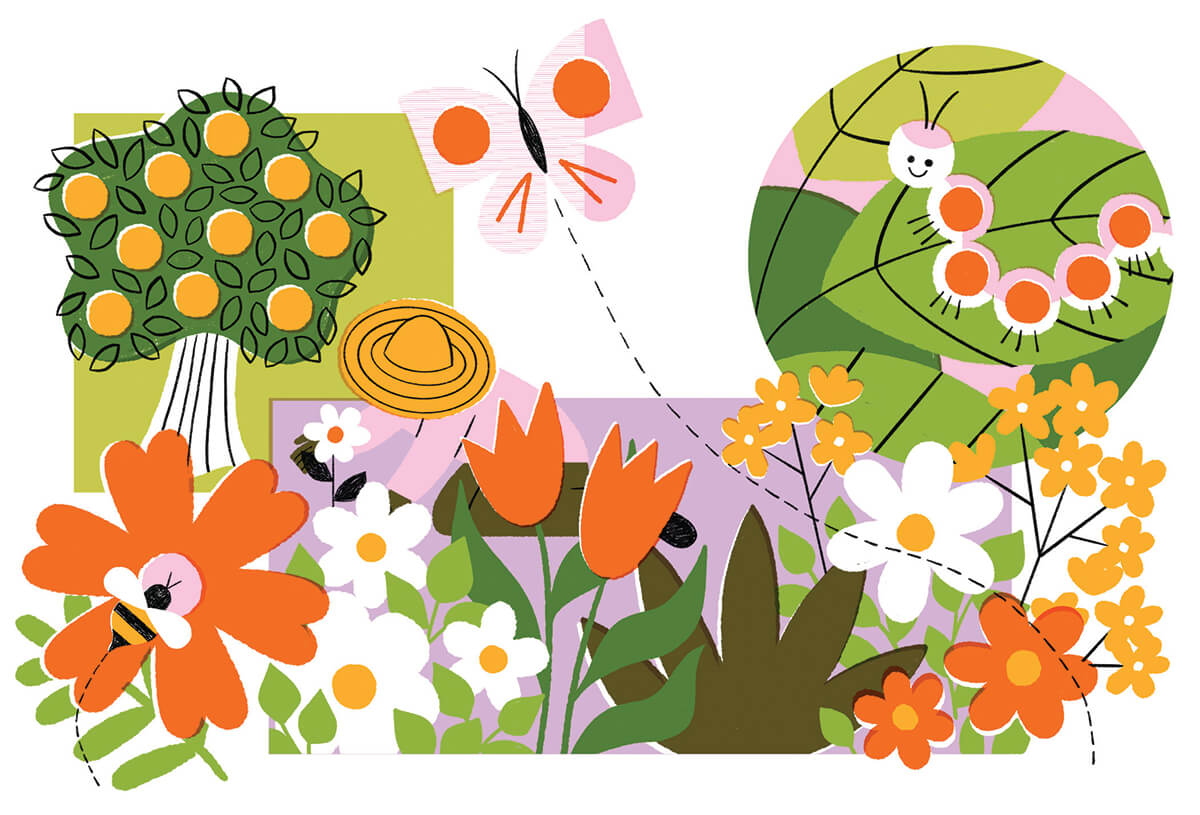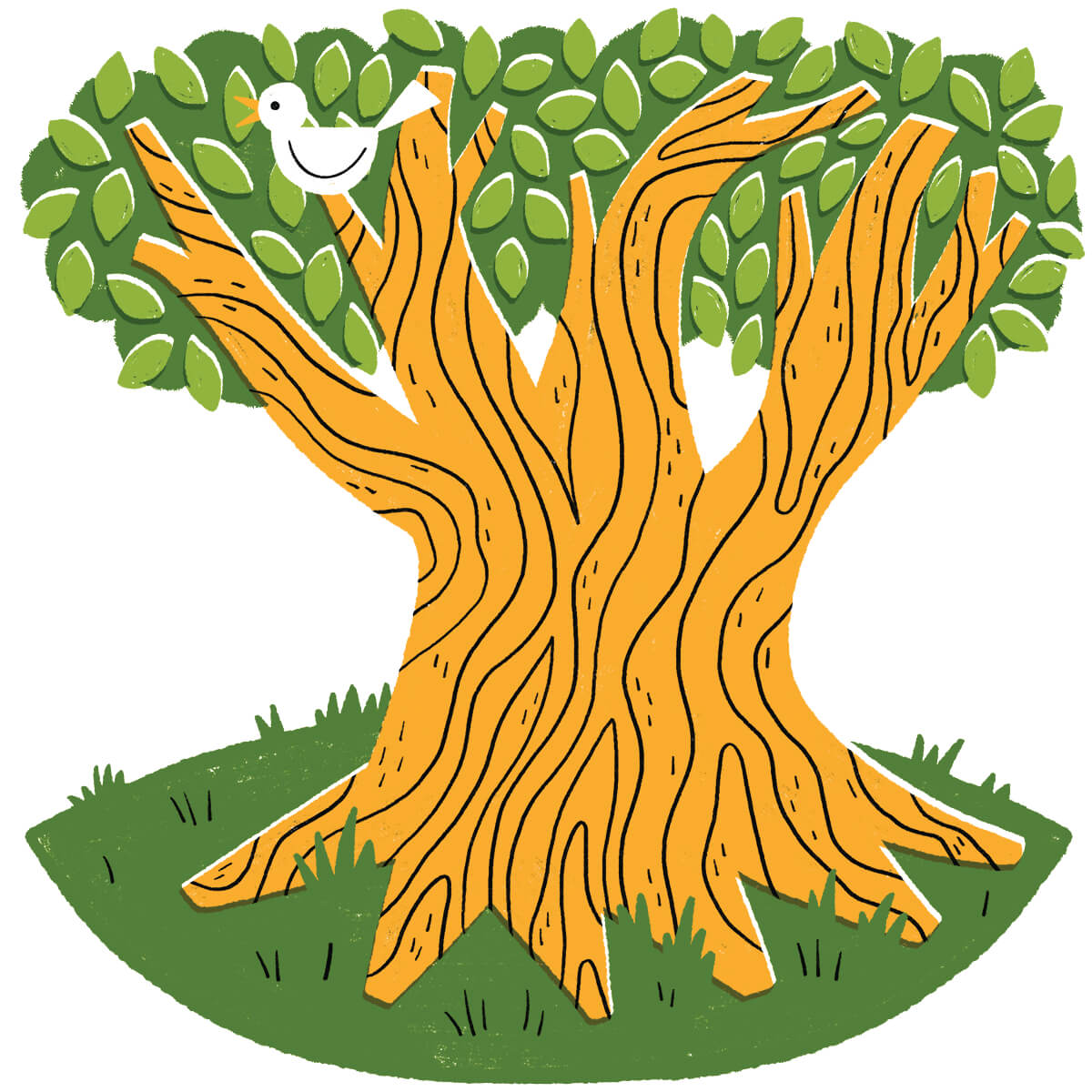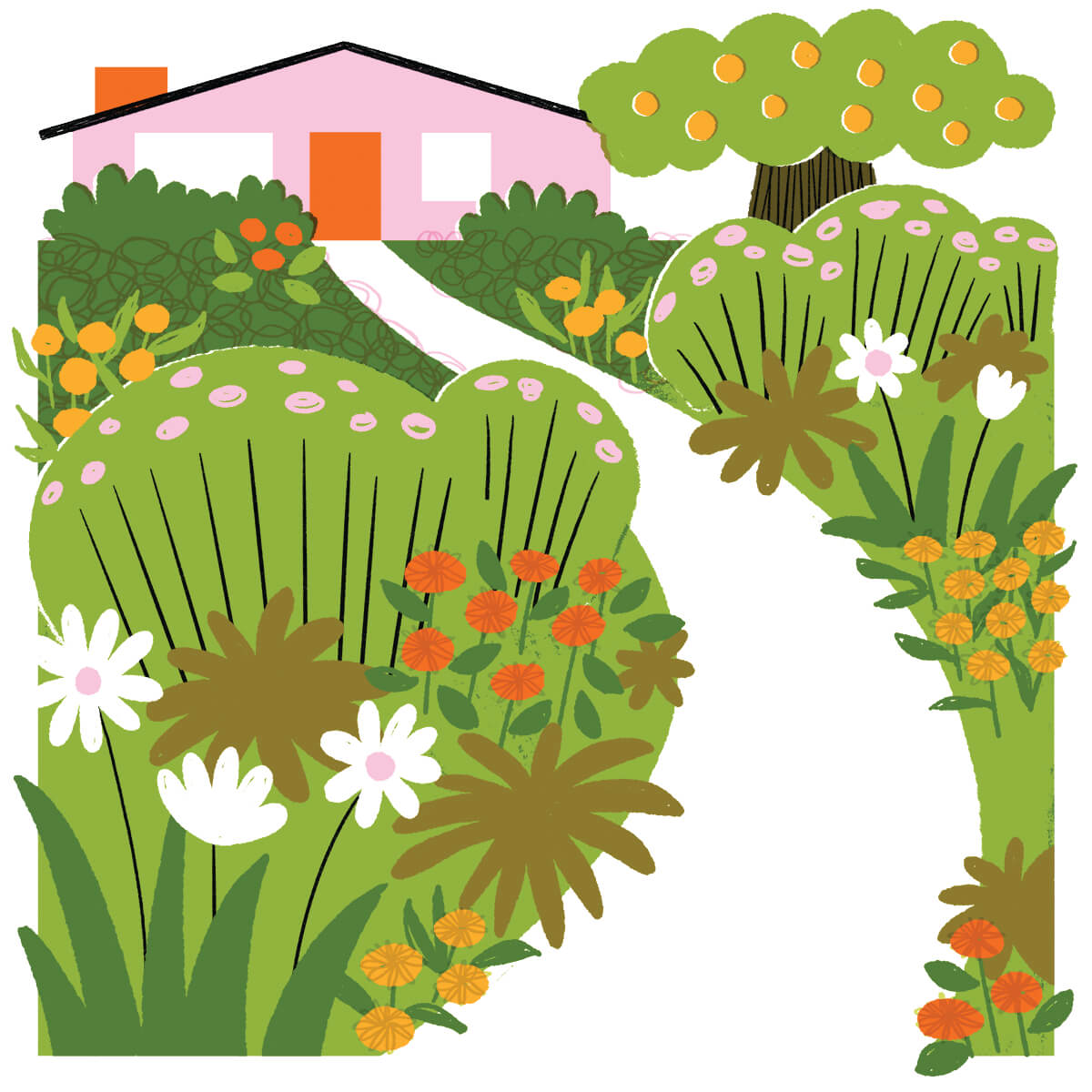Home & Living
What Does a Warming Climate Mean for Home Gardeners?
Maryland’s growing season is getting hotter and drier, and the number of warm months is on the rise.

Daffodils emerging in January rather than April. Delicate peonies that turn crispy in an unseasonably hot May. If you’ve been gardening in Baltimore in recent years, you know these are both very real scenarios.
Maryland’s growing season is getting hotter and drier, and the number of warm months is on the rise. In fact, last year the USDA updated its hardiness zones—the regions in which you can put a plant and expect it to live—for the first time since 2012. It moved much of Maryland to warmer zones.
So what does this all mean for our gardens?
“From a practical perspective, we have shorter windows of time to plant,” says Kevin J. Gaughan, principal and owner of FORM Garden Design.
Gaughan’s firm is known for its aesthetic use of native plants and ecological care. He explains that while they used to want to have plants installed by June 15, “with this year’s extreme heat, I wish we’d planted by June 1st,” thus giving plants a chance to get established before nature turned up the furnace.
“In winter, it is staying wetter longer and deeper into the spring,” he continues. “That’s really hurting the landscape industry because they’re now faced with planting outside the opportune times.”
Gaughan says the warmer temperatures are reflected in his clients’ requests. “Shade has become one of the biggest topics of discussion. [Clients] know it is getting hotter and they are looking for shade trees and structures so they can be comfortable outside.”
Gaughan favors native plants, those best suited to the challenges of the local climate; they generally don’t need extra watering and are thus better for the environment. But with temperatures now routinely soaring over 100 degrees, even native plants are struggling and gardeners are scrambling to find the most efficient irrigation systems.
WHAT’S NATIVE NOW?
“Native” is a gardening buzzword, but with shifting hardiness zones and more mercurial weather, it’s hard to know what actually is native anymore. Gaughan says perennial grasses add structure to a garden and tend to be deep-rooted and thus drought-resistant, as are old standby perennial plants like perovskia, nepeta, and salvias.
But without cold winters to kill plants back, he’s found that some of his favorites, like soledago (goldenrod), the woodland Aster divaricatus, and even some rudbeckia (like our state flower, the black-eyed Susan) are self-seeding and growing a bit wild. Plants that self-seed can take over or propagate where they don’t belong. But with this challenge comes opportunity.
“Remember, gardens are an evolution,” says Gaughan. “The fun part is we can continue to work with a garden and experiment.”
Plants he’s excited about include Southern bayberry and the Ilex vomitoria, a useful replacement for the popular boxwoods that are generally dying off in this area. And some annuals used in planters, like lantana and cannas, may even come back after a mild winter.
Remember, climate change isn’t just about extreme heat, but also erratic weather. The best way to safeguard against disappointment—like losing your peonies in a freak frost—is to plant a diverse, four-season garden.
“When things are blooming later or early, with more diversity, something will always look good,” says Gaughan. “Or, if something fails, the whole garden doesn’t fail.”
This doesn’t just make for a prettier garden. A range of plants means that you are likely always to have something in bloom, so when we have a spate of, say, 80-degree days in February, the emergent (and no doubt confused) bees will have something to eat.
FOOD FOR THOUGHT
As we think about diversifying our gardens, Lincoln Smith, founder of Forested, which teaches courses in forest gardening and designs edible “food forests,” has a unique proposition: Consider what you can eat in your yard.
Smith says we forget that the Eastern United States is a forested ecosystem and our urban and suburban gardens have a role to play in its restoration. By planting food forests—hackberry trees, acorn-producing oaks, and chicksaw plums, for example—we can rehabilitate native forest, eat local, and reduce our dependence on large-scale, monoculture agriculture.
The best thing about food forestry is trees are durable. “In an extreme weather situation, trees tend to adapt,” says Smith. “In a drought, no one is watering the forest.”
Trees also do so much to support life from creating shade to sequestering carbon. Smith says just planting a singular pawpaw tree in your yard can mean everything to the zebra swallowtail butterfly whose larvae feed exclusively on that tree. And you get to eat the fruit.
At Forested’s test garden in Bowie, Smith invites people to learn about plants they can use in their gardens that may be unexpected, like chestnuts and persimmons. Like Gaughan, Smith is a proponent of Ilex vomitoria, which, despite its name, “actually makes a great tea, similar to yerba maté.” Black chokeberry produce fruit that can be squeezed into a superfood juice, and native plants like sochan, which has a zesty, mildly bitter flavor, not only support finches (they eat the seeds) but humans, too.
“The greens are delicious steamed with a little salt,” promises Smith.
If you don’t know where to begin, “Go on a foraging walk with a local guide so you can learn what the landscape is offering,” he advises.
MICROCLIMATES, SOIL, AND MORE
Microclimates, the weather specific to your garden’s setting, are playing an increasingly important role in how we plant. For example, something labeled as “full sun” might thrive in one backyard, even on a 100-degree day, but die in another yard if it’s planted near a heat-absorbing wall. Alternately, something like a fig tree might flourish in an enclosed city yard but may not be sustainable on a hilltop in Baltimore County.
Similarly, soil composition is important. Soil can be clay, silt, sand, or loam (a combination of all three), and what is in your yard will determine what may grow well. Gaughan says that all plants need a little shade from blistering afternoon sun nowadays, even those categorized as full sun, adding that “a full-sun plant in well-drained soil will not hold the moisture it needs as it bakes all summer.”
“Soil plays a huge part in the success of a plant, especially in the home garden,” says Brent Figlestahler, head gardener for the nonprofit nonprofit Cylburn Arboretum Friends. “It’s often overlooked because we want to plant what we want to plant, but a lot of problems we see are soil-related.”
While two-thirds of Cylburn is wooded, a third is cultivated and acts as a test garden, particularly for what will grow well in the city. (A dedicated urban demonstration garden hopefully opens in 2025.) As far as microclimates go, Cylburn’s has its challenges, especially its hilltop location, which has made it vulnerable to increasingly severe storms.
Figlestahler points out a forested area that is now punctuated with sunlight after a massive tree fell and uprooted an ancient poplar in an August storm. Behind the Cylburn mansion is a solemn stump where a beloved redwood known as an “Ambassador tree” stood until it was brought down by a storm last Memorial Day weekend. Planting for resilience against severe storms may be the most difficult challenge gardeners face.
As you walk through the arboretum’s Large Conifer Collection—those are trees that bear seeds in cones—you’ll note that the Norway spruce, in particular, is showing signs of stress. That’s because “many conifers come from cool mountainous regions,” explains Figlestahler.
Trees that aren’t acclimatized to extreme heat will, like people, become stressed. And like stressed people, they are less able to fight off illness. Warmer weather is showing up with dieback and yellow needling but also, “in the heat and humidity they become vulnerable to pests, too.”
Other native species that have become victims of pest and disease made worse by climate change are Eastern hemlock, American beeches, and White ash.
It’s important to acknowledge the reality of Maryland climate change when choosing plants and trees. With the new USDA zones, some coastal regions of the state could now possibly sustain citrus trees. So gardeners need to consider looking to the northern-most reaches of southern-based plants rather than the southern-most hardiness of northern plants.
Sugar maple, that beauty of New England, is already not thriving here and will likely be unsustainable in 50 years. However, red maples are an option, while Pinus virginiana, Taxodium distichum (Bald Cypress), Sweetbay magnolia, and Styrax americanus, are southerly conifers and shrubs now doing well in this region.
Figlestahler quips that Osage oranges, native to the south-central U.S., “will likely grow in a crack in asphalt.”
“Another approach to heat tolerant trees is to look out west where it’s hot and dry,” says Figlestahler, pointing to happy cottonwoods and a sugar maple species from Oklahoma called “Flashfire.”
“We need to teach people the value of trees and to think collectively about trees as an asset to the larger neighborhood,” Figlestahler says.

In this hyperlocal, microclimate gardening world, growers are realizing that even the DNA of a seed may determine if it will do well or die. Seed collected from an echinacea in Maryland may have a genetic propensity to do well here versus echinacea from seed in, say, Oregon.
Cylburn is part of a multistate program growing oaks from seed collected from major cities along the Eastern Seaboard. Not only will Cylburn hopefully gain an oak forest, but participants will learn which seeds grow best where.
“The end goal is to produce more healthy oaks for our cities in particular,” says Figlestahler. Gardeners often overlook the importance of trees in the landscape (or worse, look upon them as a potential nuisance), says Figlestahler. “We need to teach people the value of trees and to think collectively about trees as an asset to the larger neighborhood,” he says.
Trees also play a major role in pollination, as much or more than native flowers. “If you plant a black locust in a front yard in the city, when it blooms it is amazingly full of native bees that you may never see because they will be up in the canopy, but that are essential to the environment.”
BRAVE NEW WORLD
Things are changing and that can be difficult for gardeners. Severe storms may bring down large old-growth trees, turning a shade garden to full sun. Cherry trees that dazzled in spring now emerge in winter. But Gaughan says, as hard as it may be, now is the time to learn, to experiment, and to redouble our gardening efforts.
“It’s more important now than ever to expand our gardens because there’s so much we can do to slow climate change,” he says. “It’s not the time to do less; now is the time to do more.”
Best Practices for Warming Gardens
CONTROL INVASIVES
With warmer winters, invasives are getting a foothold earlier in the season and thus becoming more aggressive. Get a jump on pulling out honeysuckle, multiflora rose, Japanese stiltgrass, and garlic mustard.
USE WATER WISELY
Add rain barrels to downspouts for a watering source, keep soil healthy with compost and organic matter, water gardens only in the morning, and use mulch to preserve moisture. Learn about this and more through the Maryland Extension Service’s “Baywise” program.
PROPER PEST MANAGEMENT
Control disease and insects with Integrated Pest Management, a process of prevention and natural controls, and use chemical pesticides only as a last resort.
SO LONG LAWNS
Grass is passé. A thirsty monoculture, lawns support little to no life, encourage runoff, and are often a repository for chemicals and pesticides. Convert grass to native meadow (see tips, here) or
download Forested’s free design brochure to turn your lawn into an edible forest. Mow smarter, cutting grass high and not mowing during periods of high heat and drought.

KEEP IT UNTIDY
Fall leaves left in your yard create a winter habitat for beneficial insects that eat other garden pests. Spent-seed heads on flowers support winter’s birds. Sprays that kill one variety of insect may kill others you need for garden health. Make peace with some imperfection to live in balance with nature.
MANAGE MICROCLIMATES
Pay attention to how your microclimate—heat absorbing walls or asphalt, hilltop exposures, damp low-lying areas—may impact plants.
SAVVY SOIL
Soil is the foundation for all plants. Keep it healthy with ongoing additions of compost and organic matter.
GIVE ROOTS A CHANCE
When planting trees, dig a wide hole with roughed-up edges (augers and spades will make sheer hole walls that can become like concrete through which roots can’t grow) and mix the existing soil with compost.